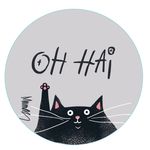- Home
- Photoshop ecosystem
- Discussions
- combining images of different sizes
- combining images of different sizes
Copy link to clipboard
Copied
I wonder if anyone can offer suggestions on how to achieve the following result. Screen shot 1 shows an image which is a composite, and quite large. Screenshot 2 shows the same subject (a column), with its background, but not as a composite. It’s quite a bit smaller. I’d like to overlay the column on the background, but I need to enlarge the background, or shrink the column. My thought was to meet somewhere in the middle, and do both. Since I plan to apply a Gaussian blur to the background, my hope is that the pixilation which results from enlarging the background will not be evident, or a problem. For the base of the column background, I’ll clone in the base from the larger (column) image so that it appears natural. As the blur increases with the background distance, the decrease in image quality won’t be an issue (I hope). Does this sound like a good (or the only) way to achieve my objective?
Finally, I was told that resampling *always* degrades image quality. Obviously, this is true of down sampling, but is it true of up sampling? I would think more PPI would mean better quality, but perhaps there‘s a point where there are *too many* PPI? What is the best way to take a big image and make it smaller, if that’s required? Thank you.
 1 Correct answer
1 Correct answer
You didn't mention what the final size of the image needs to be or what the image might be used for (web or print, etc). Those are important considerations.
Resampling does always degrade image quality, whether you are upsampling or downsampling. However, the degradation is less noticable when downsampling.
When upsampling I personally try not to upsample more than 125%.
Applying Gaussian blur to the background will indeed help if you need to enlarge the background. You could first convert the b
...Explore related tutorials & articles
Copy link to clipboard
Copied
It 's upsizing that causes loss of quality (-edit- you're stretching the pixels out,which makes each one blurry). Downsizing can make the image sharper. You can take the larger image and go Image>Size> and enter the desired height, to go into the other image, in pixels. Make it a tad taller than you need so you can reduce the size with the TransformTool to fit into the background.
Copy link to clipboard
Copied
Thank you. The *desired height* would need to be not much higher than that of the background image, presumably. That would be making the \larger (column) image considerably smaller than it is. Approx. 25000 px vs. 8200 px background image. If I wanted it printed at least 48" high., I don't know if I can stretch the background that much. Per Barbara's suggestion, I had thought of applying a Gaussian blur to the background only which would hide the pixilation. I guess all I can do is try and view at 100%, and see if that's accceptable.
Copy link to clipboard
Copied
You didn't mention what the final size of the image needs to be or what the image might be used for (web or print, etc). Those are important considerations.
Resampling does always degrade image quality, whether you are upsampling or downsampling. However, the degradation is less noticable when downsampling.
When upsampling I personally try not to upsample more than 125%.
Applying Gaussian blur to the background will indeed help if you need to enlarge the background. You could first convert the background layer to a Smart Object layer. Enlarge the background image. Apply the Gaussian Blur filter and add a gradient to the Gaussian Blur so that the blur increases as the backround receeds. This is the general idea:
More PPI is better if the original image has more PPI. Adding it later just degrades the image. (Although Photoshop has gotten better at resampling over the years.) It is possible to have too much PPI if the output device cannot handle the extra PPI.
When enlarging or reducing the size of an image, I like to first convert the image to a Smart Object. That way if I changed my mind about the size, for example maybe make it larger and then decide to reduce it a bit later, the image maintains better quality because the original pixels are preserved.
View the image at 100% to see the most accurate view of the results.
Copy link to clipboard
Copied
Thank you. The ideal and ultimate disposition of the image would be as a print. The column is 25169 px high and at 300 PPI is 89”. It probably doesn’t need to be that big, but the background image is only 8256 px high. Since you said you would not personally enlarge an image beyond 125%, it would be 10,320 px at that rate. If I shrunk the column to half its size, it would be 12,584 px high. So maybe I could go to an 11,500 px height and, using the suggestions for applying a gradient to the Gaussian blur which you made, use this as my image height. The bottom line I believe is if you want a big image, you may need to make a composite, and that’s not practical for a background. Perhaps I could do a less extensive composite involving 2 or 3 images for the background to get to a larger overall image. If you have any other suggestions, I’d appreciate knowing. Thanks again for your help.
Find more inspiration, events, and resources on the new Adobe Community
Explore Now



